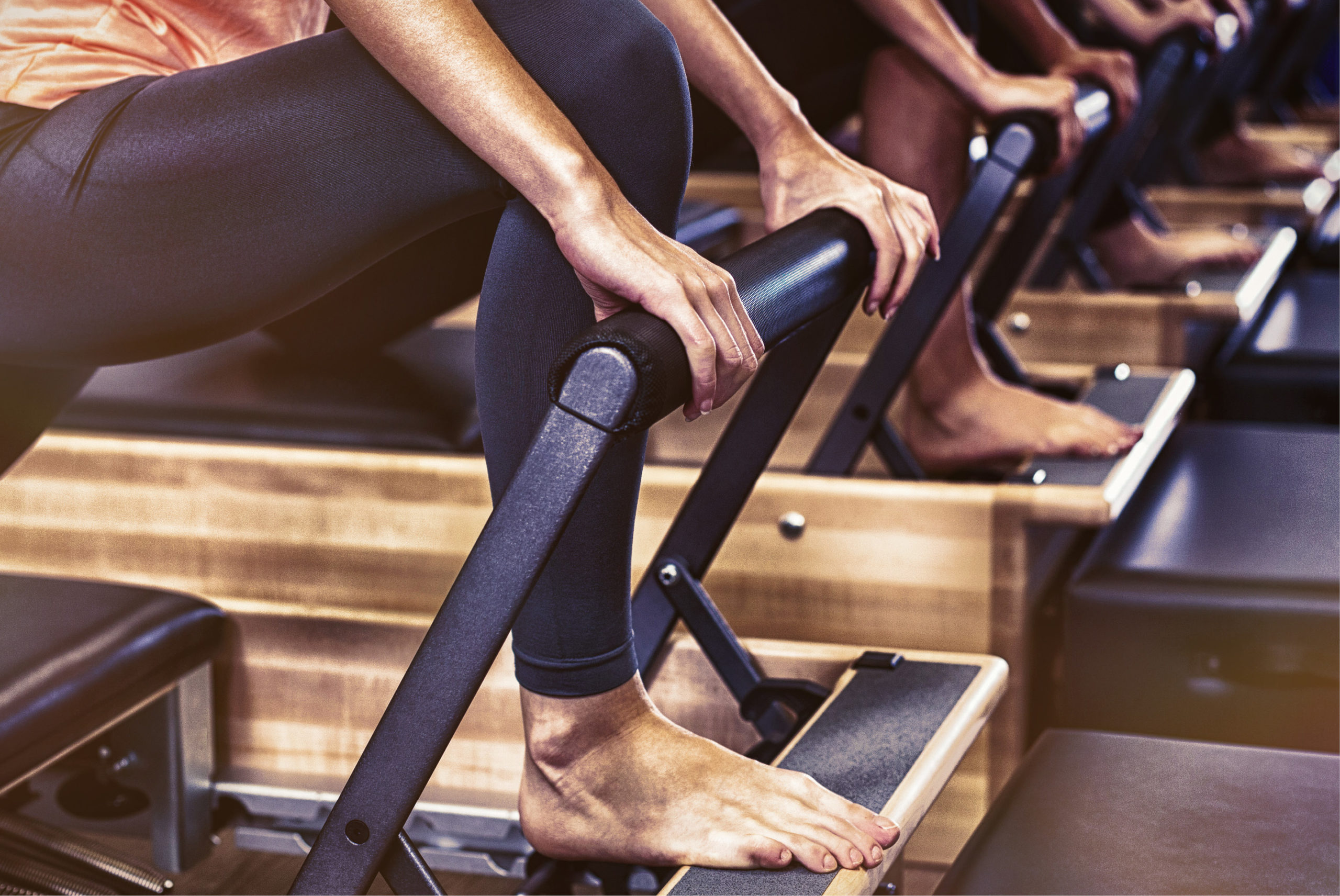
We teamed up with our friends from Club Pilates Englewood to bring you our most recent blog highlighting the Pilates-PT Connection. The practice of Pilates and the principles of physical therapy have gone hand in hand since the early 20th century. EXCEL Englewood Cliffs Clinic Director, Antonio Sapienza, PT, DPT, and Kaleigh Campen from Club Pilates, teamed up to provide some great information on what exactly IS Pilates and how Pilates and PT can work together. Whether you’re interested in starting this type of exercise or you’re a long-time practitioner, we hope this blog gives you some helpful insight to your Pilates practice.
The History of Pilates
Joseph Pilates was a German physical trainer who was chronically ill as a child. Because of his conditions, he dedicated his life to studying anatomy and trying as many exercises as he could. During World War I, he was interned by British authorities, where he began to work with soldiers, developing exercises to help heal and tone wounded soldiers. He refined his program, introducing a minimal-equipment system of mats and springs, and later tagged it as “Contrology.” It was during this time the Pilates Method was born.
What is Pilates?
Pilates as we know it is a form of low impact exercise shown to increase flexibility and improve mobility. Pilates classes also build overall body strength and create lean muscle tone. The emphasis is on lengthening the muscles versus bulking and shortening. Through practicing Pilates, you can potentially see overall slimming along with improved joint health.
One of the major concentrations of Pilates is strength balance with the support of good stability. Having a balanced body is crucial in the prevention of injuries and aiding in recovery. In addition, when the body is balanced, working out becomes easier and fitness goals can be achieved faster. Pilates strengthens smaller supporting muscles which improve posture, creating a more efficient workout.
Joe Pilates believed physical and mental health went hand in hand, which is why Pilates is such a mental and physical exercise. Individuals who practice Pilates may find that they are more in tune with their body, feel less stress and more focused. And due to its low-impact nature, Pilates is for everyone across all walks of life. In addition, exercises can be modified to best suit the individual, and because of this, it is near impossible to plateau. Pilates truly is a lifelong fitness regimen.
The Pilates-PT Connection
Even in the history of Pilates, we can see that the exercise regiment and rehabilitation have long been connected. Both physical therapy and Pilates place a large focus on strengthening the muscles responsible for posture – those located in the abdomen, low back and buttocks. In the field of physical therapy, addressing these muscle groups is vital to treating many common conditions such as low back pain, radiculopathy, hip pain, and countless others. Pilates and physical therapy also share the emphasis of maintaining a neutral pelvic alignment during exercise and addressing core strength and stability.
Both Physical Therapy and Pilates are concerned with the quality of movement as well. In Pilates, exercises must be performed correctly, or they are modified/regressed to ensure the client is able to perform the exercise in a quality manner. This is true for exercise prescription in the world of physical therapy as well, as a clinician will modify an exercise to ensure safety and effectiveness. Exercises in Pilates will combine strength, control, and facilitate movement throughout a complete range of motion. When a physical therapist prescribes exercise, it is with that same intention.
It is important to note that while Pilates and physical therapy may share many principles, the two institutions are not interchangeable. Pilates was developed as a body conditioning program (which certainly has rehabilitative benefits), whereas physical therapy involves addressing specific impairments, activity limitations, and participation restrictions (but is still valuable in providing physical conditioning).
However, individuals who do suffer from joint or back pain and have difficulty moving may find Pilates is able to cater to those restrictions and allow them to continue to work out pain free. Those individuals could find benefit in a formal physical therapy treatment program to address the specific source of their pain. Similarly, PT patients who are preparing for discharge and are looking to remain healthy and active while keeping their body safe, participating in Pilates classes can be a viable option (with approval from your PT or physician of course).
Why Club Pilates?
Like EXCEL Physical Therapy, Club Pilates goes above and beyond for their community, providing them a home away from home. Club Pilates studios offer more than a low-impact, full body workout. With a range of class offerings that challenge your mind as well as your body, Club Pilates provides a path to a more fulfilling life. The amazing instructors at Club Pilates have more training hours across more disciplines than industry standard. You’ll get individual attention in a fun group setting with other people who know that on life’s journey, it’s best to stay flexible!
Learn more about Club Pilates Englewood and Club Pilates Fort Lee and get your first class free! You can also learn more about Antonio or request an appointment with an EXCEL Physical Therapist online.
